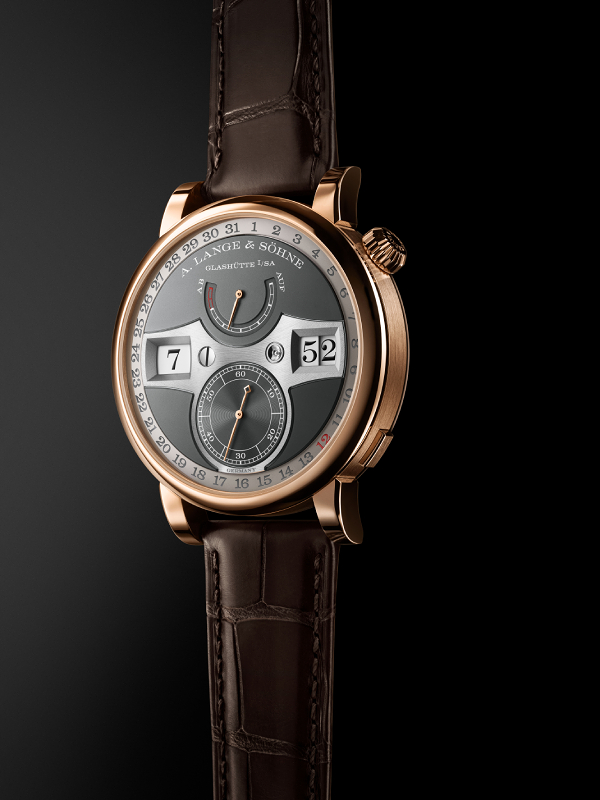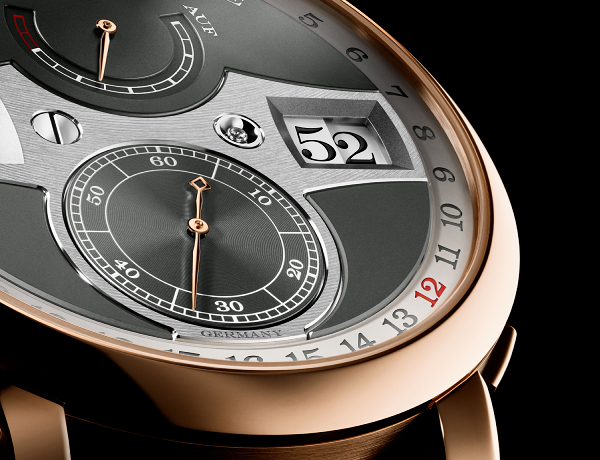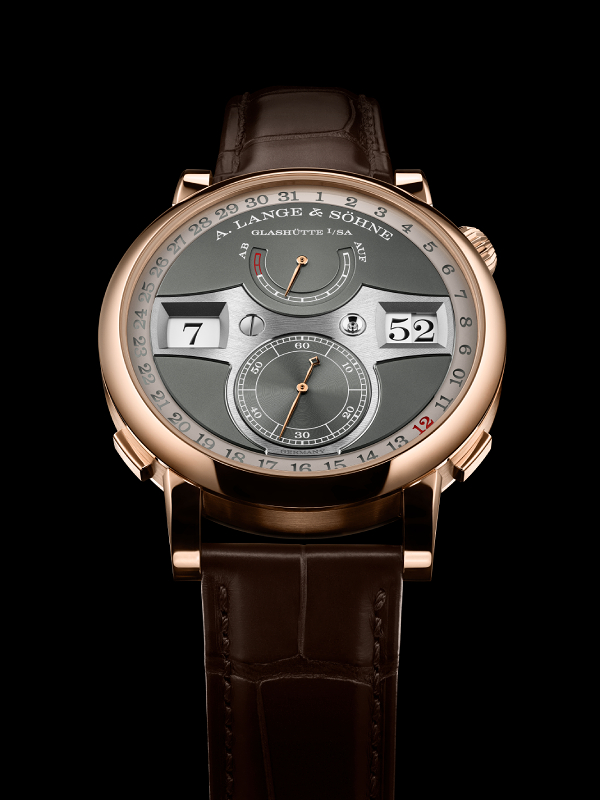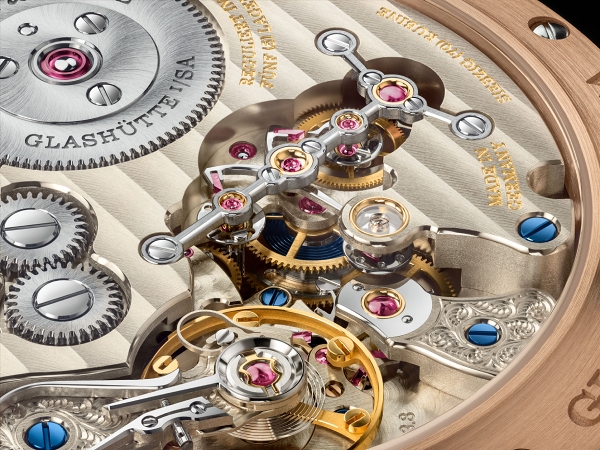
When A. Lange & Söhne first announced that the Zeitwerk was getting a date complication in 2019, everyone expected them to add another [date] aperture that would jump—just like the hour and minute counters. It’s the most common way for watches to convey the date, and it made sense, considering how the Zeitwerk is the ultimate ticker watch. This is, after all, the first mechanical wristwatch to display hours and minutes numerals that jump instantaneously.
Then came the questions: where would they squeeze in this new complication? Would they have to sacrifice another feature, like the power reserve indicator? Would a date display disrupt the symmetrical equilibrium of the watch?

But the engineers at A. Lange & Söhne are an ambitious lot, and they refused to compromise. To solve this, they reimagined what a date function could look like. They began by imprinting the 31 days of the month onto a glass ring that encircles the dial. A small red marker glides beneath each numeral, highlighting it in red to signify the date. This subtle act of ingenuity not only helped the Zeitwerk Date remain cohesive in its design language within the Zeitwerk family, but also preserved its visual balance and symmetry.
For those who enjoy a bit of whimsy in their watches, I implore you to imagine the red ring progressing around the dial like a loading bar for the month.
Six years later, Lange is finally giving the Zeitwerk Date a sibling—a blonde one. Previously available only in white gold, the Zeitwerk Date is making a grand re-entrance with a pink gold case. The new look is paired with a hand-stitched, dark brown alligator leather strap, which helps hammer home a warmer tone for the watch. Visually, it’s far dressier than its older sibling, aligning more closely with Lange’s classically rooted DNA, which might appeal even more to brand loyalists.

The grey dial from the first iteration remains, providing a neutral, muted backdrop that allows the radiant pink gold to stand out even more. The visual contrast between monotony and extravagance creates a serene yet elegant effect—fitting, considering the rather hefty price tag that accompanies the watch. The beauty of juxtaposition, baby.
Beyond that, the design elements remain largely unchanged. The two large apertures for the hour and minute numerals are still present, as is the date function that circles them. The horizontal time bridge continues to frame both the small seconds sub-dial at 6 o’clock and the power reserve indicator at 12 o’clock, all within the same 44.2mm case dimensions.
Two pushers flank each side of the watch, one at 8 o’clock and the other at 4. The 8 o'clock pusher controls the red ring that beneath the 31-day ring, allowing you to position it precisely. Meanwhile, the pusher at 4 o’clock adjusts the hour display independently of the movement’s switching cycles. This means you don’t have to press the pusher sixty times just to advance an hour ahead—something that would not only be very tedious, but also saves the watch’s mechanisms a tremendous amount of wear. There’s also a crown at 2 o’clock, which will, of course, advance the minutes.

Inside the new Zeitwerk date beats the same calibre that powered its predecessor: the ol’ reliable L043.8. It’s a manual calibre that beats at a frequency of 18,000 semi-oscillations per hour, and it requires a winding roughly once every 72 hours. Having a power reserve of three days is no small feat, considering the power required for the hour and minute numerals to jump as often as they do (exactly 1,440 times a day), and as precisely as possible.
If you’re curious to learn more, we explored the mechanics of the calibre in greater detail here. But essentially, Lange’s engineers discovered that by flipping a large mainspring upside down inside the barrel, it allows the piece to be wound from the inside—generating more power and torque than a typical mainspring. Thus, achieving a 72-hour power reserve, doubling the 36-hour capabilities of its predecessor.
All this is available for your viewing pleasure through the sapphire crystal caseback, where you’ll get to witness the 516-part calibre at work. Solarisation and engravings of the brand name can be found on various wheels and bridges, all reinforcing the idea that what you’re observing isn’t just a mechanism—it’s poetry in motion.